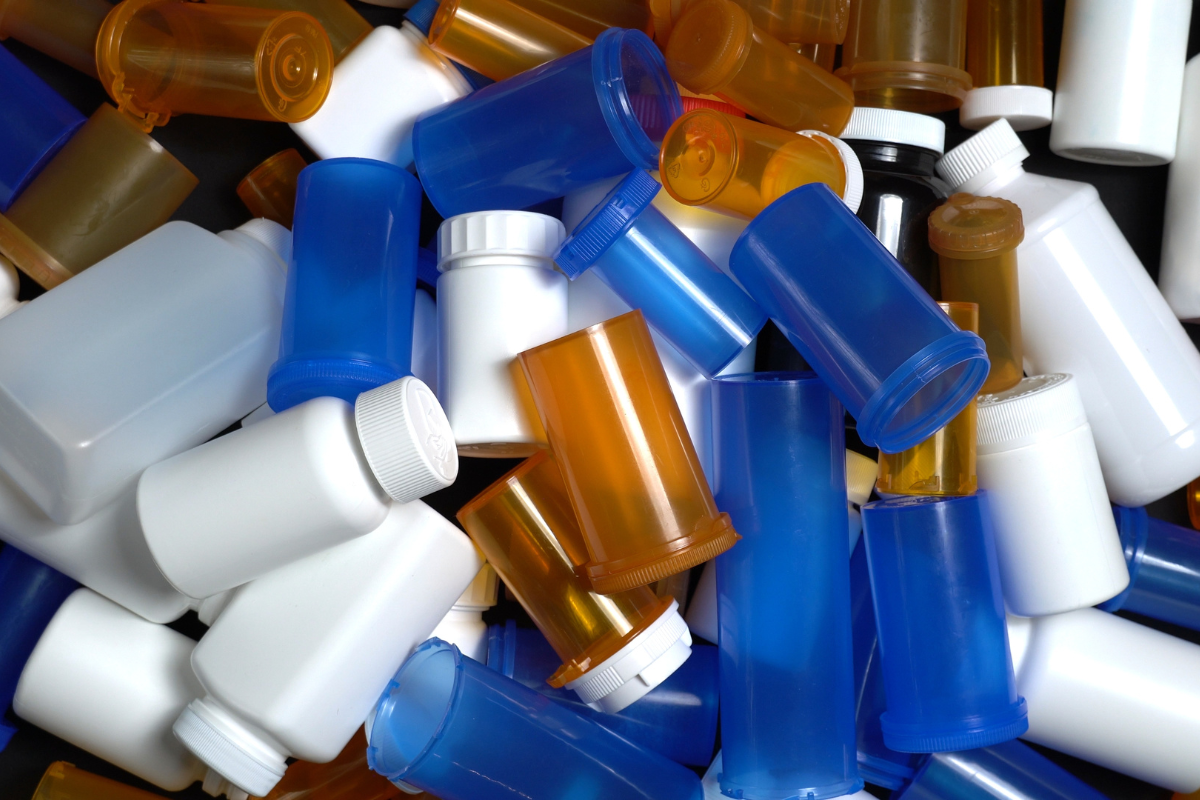
Billions of small-format plastic items are produced each year but are lost to landfills or incinerators across the board. | Golden Shrimp/Shutterstock
Editor’s note: Learn more about plastic recycling trends and many other topics at the 2025 Plastics Recycling Conference on March 24-26 in National Harbor, Maryland.
Existing technologies and targeted investments could allow U.S. MRFs and glass recycling facilities to capture tens of thousands of tons of valuable small-format plastic items, according to a Closed Loop Partners report released Feb. 19.
Billions of toiletry tubes, orange pill bottles, bottle caps and other items less than 2 or 3 inches in size are produced each year, the investment organization said in the report. Previous studies have estimated small-format packaging at around 10% of the total plastic packaging market by weight, but the materials are widely considered unrecyclable due to their size, falling through the cracks in MRF sorting lines and ultimately going to landfills or incinerators.
It doesn’t have to stay that way, Closed Loop Partners said, based on two years of research in collaboration with Circular Services, a Closed Loop company managing more than 20 MRFs. Maybelline New York, Maybelline parent company L’Oréal Groupe, Kraft Heinz, Procter & Gamble and Target also supported the work.
“With the right equipment upgrades and reconfigurations, significant volumes of these materials can be successfully recycled instead of being lost to waste,” Closed Loop Partners wrote in a press release, pointing to the example of an upgraded sorting screen that reduced small-format plastic contamination in a recycled glass stream by 67%.
Small items add up to significant amounts of valuable and in-demand materials, including PP, PET and metals, the company said. Collected in sufficient volumes, they could help brands meet recycling goals that have stalled in recent years, Closed Loop added, and investment, such as from brands or extended producer responsibility programs, can make such collection possible.
“Based on sampling at a large-scale glass recycling facility serving a major city, as much as 12,000 tons of small-format materials could be diverted annually and sold on the secondary commodities market with the right equipment — equivalent to approximately 600 truckloads per year,” Georgia Sherwin, senior director of strategic initiatives and partnerships at Closed Loop’s Center for the Circular Economy, wrote in an email.
The number balloons to the tens of thousands of tons when extrapolated nationwide, Sherwin added. And even that figure is missing a huge amount of material.
“Our estimate of recovering tens of thousands of tons is based on the small fraction of small-format packaging that currently reaches recycling facilities,” Sherwin wrote. “However, the majority of these materials never make it to recycling — they go straight to landfill after use because the infrastructure to recover them doesn’t exist yet.”
Along that vein, Closed Loop Partners announced the creation of a Consortium to Recover Small-Format Packaging, an initiative managed by Closed Loop Partners’ Center for the Circular Economy, to deploy equipment and infrastructure upgrades and support the small-format value chain.
“Our goal is to first prove that recovery is possible by successfully demonstrating proof-of-concept projects in the field,” Sherwin wrote. “Once we can show that these solutions are scalable, we hope to engage consumers to stop throwing small-format packaging in the trash if it’s well designed (e.g., monomaterial packaging) and instead recycle it. This is when we expect to see significantly higher volumes of small formats being diverted from landfill and effectively recycled.”
Closed Loop and its various segments have invested or managed hundreds of millions of dollars in a wide range of initiatives over the past decade, which the company says has resulted in the diversion of more than 6 million tons of material.
“As the number one makeup brand in the world, we have a responsibility to create the most sustainable makeup life cycle possible,” Trisha Ayyagari, global brand president for Maybelline New York, said in a written statement.
“Most makeup packaging is too small to be recycled, it literally falls through the cracks at recycling facilities,” Ayyagari added. “That’s why it was so important to partner with Closed Loop Partners’ Center for Circular Economy to pioneer solutions for small-format recycling and to help us and the beauty industry accelerate our sustainable transformation. We look forward to making progress together.”
Closed Loop’s work is the latest of multiple efforts to address small-format recycling. L’Oréal and other companies partnered with the Massachusetts Institute of Technology and the nonprofit Sustainability Consortium in 2023 to develop a sorting process to catch the items, for example.